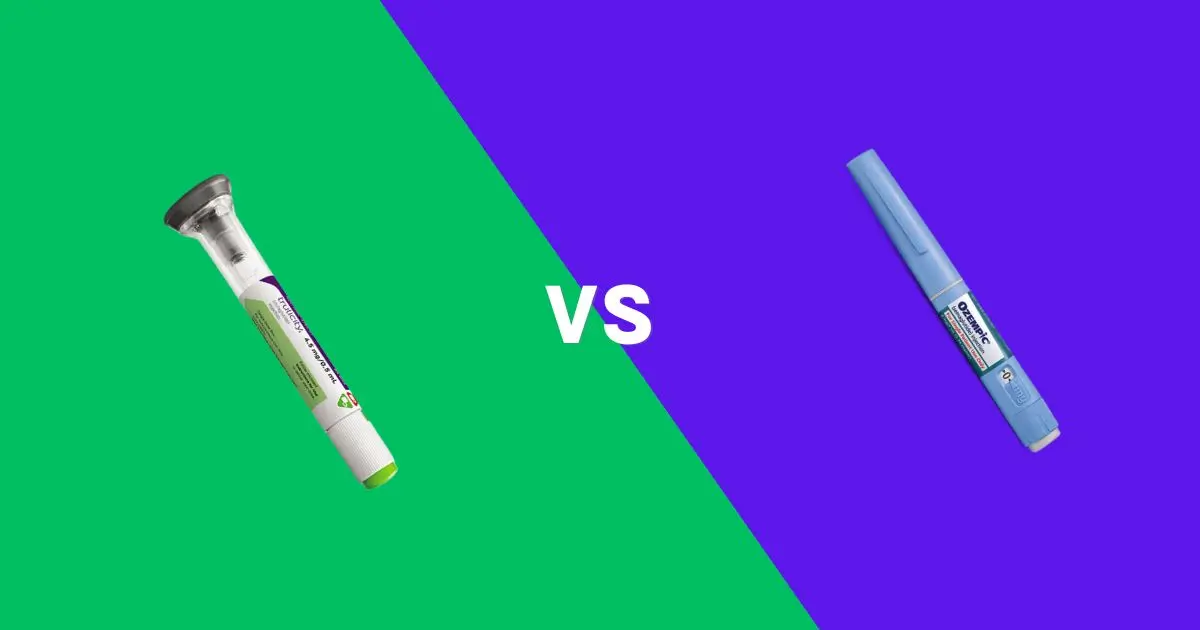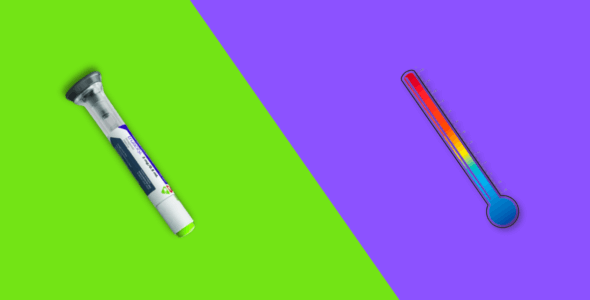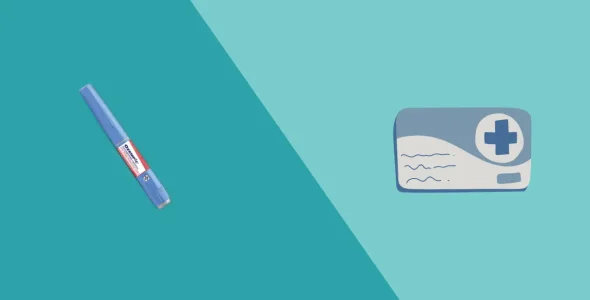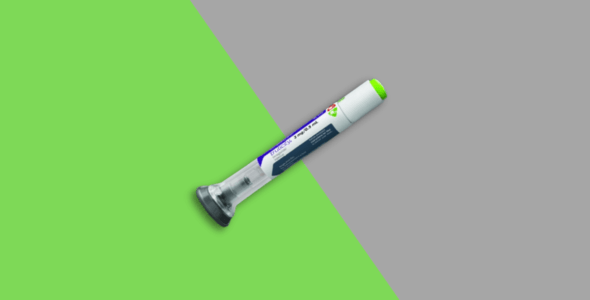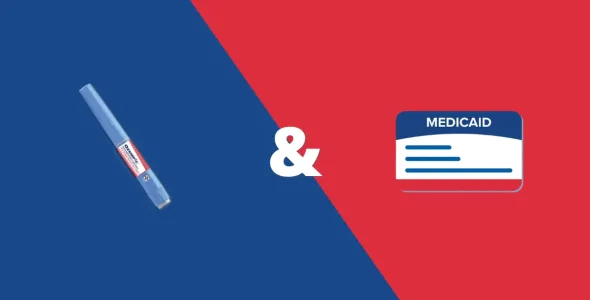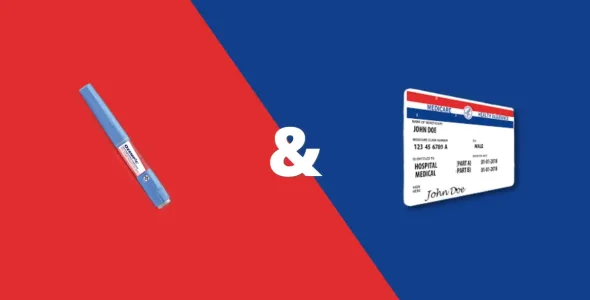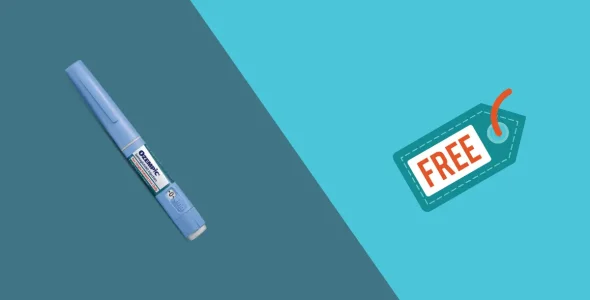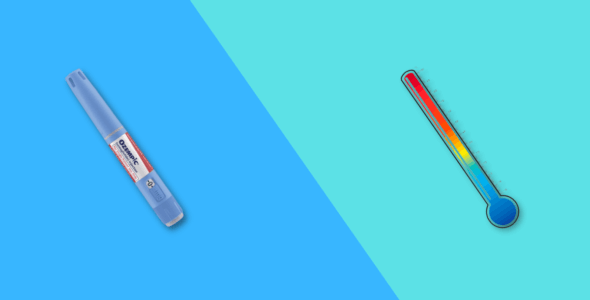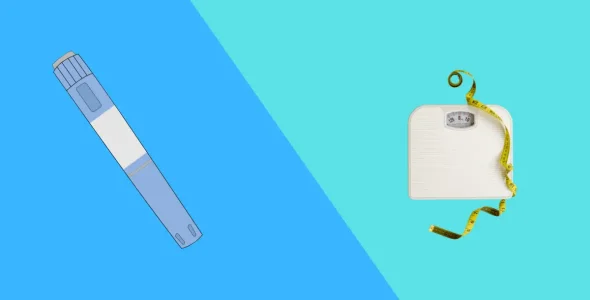Trulicity vs. Ozempic: Comprehensive guide
Choosing between Trulicity and Ozempic? We'll break down the differences to help you make the right decision.
Key highlights
- Trulicity (dulaglutide) and Ozempic (semaglutide) are weekly injections for treating type 2 diabetes. They work in similar ways to help control blood sugar levels.
- Ozempic may lower hemoglobin A1C (average blood sugar over 3 months) more than Trulicity and may also help you lose more weight.
- Both medicines are approved to help reduce the risk of serious cardiovascular problems in some people with heart disease or risk factors for heart disease.
- Trulicity and Ozempic are similar, but your doctor may choose one based on your medical history, personal preference, or insurance coverage.
Trulicity and Ozempic are popular GLP-1 receptor agonists FDA-approved to treat type 2 diabetes and lower the risk of serious cardiovascular problems in certain people with existing heart disease or risk factors for heart disease.
Understanding the differences between Trulicity and Ozempic is helpful when choosing the most effective treatment based on individual health needs and potential side effects.
Keep reading to understand the key similarities and differences of Trulicity vs. Ozempic. Explore their mechanism of action, dosages, effectiveness, and which medication might be better for you.
Overview of Trulicity and Ozempic
Trulicity (dulaglutide) and Ozempic (semaglutide) are both glucagon-like peptide 1 receptor agonists (GLP-1) used for managing high blood sugar in type 2 diabetes. They can also help with weight loss and support heart health.
Trulicity and Ozempic are both incretin mimetics, which help the pancreas release insulin when blood sugar is high, but they have some key differences.
What is Trulicity?
Trulicity (dulaglutide) is a once-weekly subcutaneous injectable GLP-1 agonist that helps control blood sugar levels and reduce cardiovascular risk in adults and children from 10 years of age with type 2 diabetes. Some people may also experience weight loss with it.
Trulicity has proven heart health benefits and is approved by the FDA (U.S. Food and Drug Administration) for type 2 diabetes in both adults and children as young as 10. It is also used in people with type 2 diabetes to reduce heart attack and stroke in people with cardiovascular risk factors.
Trulicity helps lower blood sugar levels by mimicking a hormone called GLP-1. This helps the body release insulin, reduce sugar production, and slow down digestion (gastric emptying), leading to better glycemic control and often significant weight loss.
What is Ozempic?
Ozempic (semaglutide) is an FDA-approved GLP-1 receptor agonist made by Novo Nordisk used to lower blood sugar in people with type 2 diabetes and also used off-label for weight loss in people with obesity and overweight.
Ozempic is also FDA-approved for reducing the risk of major cardiovascular events (heart attack, stroke) in adults with type 2 diabetes and known heart disease and for reducing the risk of worsening kidney disease and cardiovascular death in adults with chronic kidney disease and type 2 diabetes.
Ozempic works like a natural hormone in your body called GLP-1. It makes your pancreas release insulin when your blood sugar goes up, which lowers your blood sugar back to normal, so you reach blood sugar stability with type 2 diabetes.
Ozempic also slows down how quickly food leaves your stomach, so food stays in your stomach longer and prevents too much sugar from getting into your bloodstream. It also makes you feel less hungry, so you eat less. These effects on hunger and food intake are why Ozempic is sometimes used for weight loss, even though it’s approved for type 2 diabetes.
Key similarities between Trulicity and Ozempic
Trulicity and Ozempic are similar medications in the following ways:
- Both are injectable medications used to manage blood sugar levels in people with type 2 diabetes.
- Both medications are injected under the skin (subcutaneously) once per week.
- Both medications work the same way to help with weight loss by slowing gastric emptying which helps suppress appetite and targeting the part of the brain that regulates appetite and fullness.
- Both medications work the same way to lower blood sugars for people with type 2 diabetes by increasing insulin release and reducing glucose production in the liver.
- Both medications are GLP-1 receptor agonists.
- Both medications may cause similar gastrointestinal side effects, such as nausea and diarrhea.
Key differences between Trulicity and Ozempic
Though they both belong to the same drug class, they have some key differences, such as:
Active ingredients
Trulicity has the active ingredient dulaglutide. Dulaglutide works by mimicking the hormone GLP-1, which helps the pancreas release insulin when blood sugar is high. It also reduces sugar production in the liver and slows down stomach emptying to help control blood sugar levels.
Ozempic has the active ingredient, semaglutide. Semaglutide works by increasing insulin and decreasing glucagon to control blood sugar in adults with type 2 diabetes.
Dosage
Ozempic is available in four pre-filled, multi-dose syringe pen doses, including 0.25 mg (starting dose), 0.5 mg, 1.0 mg, and 2 mg (maximum dose).
Ozempic comes as a prefilled pen with multiple doses so you can reuse the pen for a month with a new needle each time. Your pharmacy will give you one pen and the needles.
Each pen has four different doses which is a 30-day supply. The number of pens you get depends on your dose. The maximum dose is 2 mg once a week.
Trulicity comes in a box with four pens, each for one dose per week, which lasts a month. The starting dose is 0.75 mg per week and can go up to 4.5 mg per week. For children aged 10 or older, the starting dose is the same and can go up to 1.5 mg per week.
Administration
Ozempic is an injectable solution administered once weekly under the skin (subcutaneously) of your stomach, upper arm, or thigh. It can be taken with or without food. Ozempic injection pens have more than one dose, so you’ll need to put on a new needle each time you inject and set your dose. Unopened pens should be kept in the fridge until their expiration date, and opened pens can be stored at room temperature or in the fridge for up to 56 days.
Trulicity is injected under the skin once a week, in areas like the stomach, upper arm, or thigh. It comes in prefilled pens that should be kept in the fridge and can be taken with or without food. Be sure to rotate injection sites every week and follow the correct injection method.
Effectiveness for blood sugar control and weight loss
Ozempic and Trulicity can help with weight loss, but they’re not FDA-approved for chronic weight management. The FDA has approved other similar drugs for weight loss, like Wegovy (semaglutide), Saxenda (liraglutide), and Mounjaro (tirzepatide).
One study has shown that semaglutide can help people lose up to 15% of their body weight, while dulaglutide and liraglutide help with weight loss of 3% to 9% of body weight on average.
Research shows semaglutide may be more effective than dulaglutide for weight loss in people with type 2 diabetes. Dulaglutide has also been studied for helping smokers avoid weight gain after quitting, but its benefits are limited and short-term.
Both drugs are safe but differ in how well they lower heart disease risk. Studies suggest that semaglutide (Ozempic) may lower blood sugar more than dulaglutide (Trulicity).
For heart disease risk, Trulicity reduces major heart events by 12% in people with heart disease or risk factors, while Ozempic reduces them by 26%, but only in those with known heart disease.
Pen sizes
Ozempic comes as a prefilled multi-dose pen in four doses: 0.25 mg (starting dose), 0.5 mg, 1 mg, and 2 mg (maximum dose). As the pens are multi-dose, you can reuse the pen for a month, but use a new needle each time. Your pharmacy will give you one pen and the needles.
Trulicity is available in four different strength pens: 0.75 mg/0.5 mL, 1.5 mg/0.5 mL, 3 mg/0.5 mL, 4.5 mg/0.5 mL. The starting dose is usually 0.75 mg once a week, which may be increased to a maximum of 4.5 mg once weekly if needed.
Side effects and safety considerations
Side effects are most common when you first start using the medication or increase the dose, and higher doses of both drugs can lead to a higher risk of side effects.
The most common side effects of Ozempic include:
- Nausea
- Vomiting
- Diarrhea
- Loss of appetite
- Constipation
- Abdominal pain
The most common side effects of Trulicity include:
- Nausea
- Diarrhea
- Stomach pain
- Decreased appetite
- Some people may also experience fatigue or indigestion.
Although rare, some people taking Ozempic or Trulicity may experience serious side effects:
- Severe allergic reaction
- Hypoglycemia (low blood sugar)
- Kidney problems
- Vision changes (diabetic retinopathy)
- Pancreatitis (inflammation of the pancreas)
- Gallbladder problems
Warnings
Both drugs have a black box warning from the FDA for the risk of thyroid tumors or thyroid cancer.
You should not use both of these drugs if you:
- Are allergic to any of the ingredients
- Have a personal or family history of medullary thyroid carcinoma or Multiple Endocrine Neoplasia syndrome type 2 (MEN 2)
- Are pregnant or planning to become pregnant
- Are breastfeeding
- Have serious kidney or liver problems
- Have a severe gastrointestinal disease such as gastroparesis (delayed stomach emptying)
Cost and insurance coverage
The cost of Trulicity or Ozempic can vary depending on insurance coverage, especially for weight loss, which is often not covered However, assistance programs are available to help with costs.
Newer drugs like Ozempic are usually more expensive than older weight loss drugs like Saxenda and Byetta.
Ozempic cost and insurance coverage
The list price of Ozempic is $997.58 for a 28-day supply without insurance, which is $249.40 per week or $11,970.96 per year. The retail price you pay can vary depending on which pharmacy and location you purchase from. The average retail price can range from $800-$1,000 per month.
Check with your insurance to see if they cover Ozempic. If you have type 2 diabetes mellitus, insurance coverage is more likely, as most insurance plans, including Medicare and Medicaid (except in some states), do not currently cover weight loss medications.
The Ozempic Savings Card program can reduce the cost of Ozempic to as low as $25 per month. You must have private or commercial insurance to qualify for the program.
Eligible patients can receive free Ozempic through the Novo Nordisk Patient Assistance Program (PAP). This program helps uninsured or underinsured patients access the medication for free if they meet certain criteria. Patients generally need to meet income and insurance criteria to qualify. However, the program is only for people with type 2 diabetes and not for weight loss. There’s currently no generic alternative available for Ozempic.
Trulicity cost and insurance coverage
The cost of Trulicity varies based on where you live, your insurance, and if you use manufacturer assistance programs.
Without insurance, a month’s supply is around $800-$900, but with insurance, it can be much lower depending on your plan.
The Trulicity Savings Card program can reduce the cost of Trulicity to as low as $25 per month if you have commercial insurance that covers Trulicity.
Insurance coverage for Trulicity may vary, and some plans may cover it for diabetes but not for weight loss. If you can’t afford it, the manufacturer has assistance programs that may help reduce the cost for eligible patients. Check with your insurance and your healthcare team for details.
Individuals who are uninsured or underinsured and meet the specified income and insurance eligibility requirements may be eligible to receive Trulicity at no cost through the LillyCares Patient Assistance Program.
Cardiovascular outcomes and other health benefits
Clinical trials have shown that Ozempic reduces the risk of major adverse cardiovascular events (MACE), including cardiovascular death, nonfatal heart attack, and nonfatal stroke in patients with type 2 diabetes and established cardiovascular disease. The SUSTAIN-6 trial showed a 26% reduction in MACE for semaglutide vs placebo.
The REWIND trial, a large study, showed Trulicity reduced major cardiovascular events (heart attack, stroke, and cardiovascular death) by 12% vs placebo.
Ozempic vs. Trulicity: Key differences
| Ozempic | Trulicity | |
|---|---|---|
| Active ingredient | Semaglutide | Dulaglutide |
| FDA approval for weight loss | Not FDA-approved for weight loss | Not FDA-approved for weight loss |
| Administration | Weekly subcutaneous injection | Weekly subcutaneous injection |
| Effect on HbA1C | May lower HbA1C more | May lower HbA1C less |
| Cardiovascular benefits | Heart health benefits in people already diagnosed with a cardiovascular condition | More modest heart health benefits, but they extend to those diagnosed and at risk |
| Weight loss benefits | May deliver stronger weight loss benefits | Weight loss benefits are moderate |
| Cost | Costs about $1,000 monthly, depending on insurance | Expensive, but cost is comparable to Ozempic |
Disclaimer: This chart is for informational purposes only and should not replace medical advice. Always consult your healthcare provider for personalized recommendations for your treatment plan.
Clinical studies
A study compared Trulicity and Ozempic and found that Ozempic lowered A1C more than Trulicity. A1C is a test that shows your average blood glucose over 3 months.
In the 40-week trial, the highest Trulicity dose lowered A1C by 1.4%, while the highest Ozempic dose lowered it by 1.8%.
Both drugs come in higher doses than those used in the study, but these new doses haven’t been compared yet.
In the same study, Trulicity and Ozempic were also compared for weight loss in people with type 2 diabetes. People taking Ozempic (0.5 mg or 1 mg) lost more weight, about 10 to 14 pounds, while those on Trulicity (0.75 mg or 1.5 mg) lost about 5 to 7 pounds.
Both medicines can help with weight loss but they are not officially approved for that use. However, a higher dose of semaglutide (the ingredient in Ozempic) is sold under the brand name Wegovy, which is approved for weight loss.
The SUSTAIN 7 trial compared once-weekly semaglutide (0.5 mg or 1 mg) with once-weekly dulaglutide (0.75 mg or 1.5 mg) in patients with type 2 diabetes over 40 weeks. The results of this head-to-head trial showed that semaglutide led to greater reductions in hemoglobin A1C (1.8% vs. 1.4%) and more weight loss (10-14 lbs vs. 5-7 lbs) compared to dulaglutide, making it a more effective option for blood sugar control and weight management.
How to choose the right medication for you
Your healthcare professional may recommend one GLP-1 drug over another based on your health, blood sugar levels, and goals.
For example, Ozempic might lower blood sugar more, while Trulicity could be better for people at risk of heart disease. If weight loss is a primary goal, Ozempic may work better for you.
Talk to your doctor about your health needs to decide if Ozempic, Trulicity, or another medication is right for you.
Who should use Trulicity?
Trulicity is approved for:
- People aged 10 and older with type 2 diabetes
- To lower the risk of MACE in people with existing heart disease or risk factors for heart disease
Who should use Ozempic?
Ozempic is FDA-approved for:
- Controlling blood sugar in adults with type 2 diabetes
- Reducing the risk of serious heart problems, like heart attack, stroke, and death, in adults with type 2 diabetes and heart disease
- Reducing the risk of worsening kidney disease and cardiovascular deaths in adults with type 2 diabetes and chronic kidney disease
Although Ozempic isn’t FDA-approved for weight loss, a healthcare provider may prescribe it off-label to help with weight management. Alternatively, your healthcare provider may prescribe Wegovy, which is FDA-approved for chronic weight management and contains the same active ingredient as Ozempic.
Switching from Trulicity to Ozempic
Your healthcare provider may decide to switch you from Trulicity to Ozempic to better control your blood sugar, manage side effects, or meet your treatment goals.
If you’re not having side effects, you’ll likely start the new medicine the day after finishing the old one. If switching due to side effects, your doctor may wait until they subside before starting the new medication at a low dose.
Pros and cons of Trulicity vs. Ozempic
Trulicity pros
- Effective at lowering A1C in type 2 diabetes
- Simple, once-weekly injection with pre-set dosing
- Easy-to-use pen with no need to dial or measure doses
- Proven cardiovascular benefits in high-risk patients
- Widely available and often covered by insurance
Trulicity cons
- May result in only moderate weight loss compared to Ozempic
- Common side effects include nausea, diarrhea, and fatigue
- Room temperature stability lasts only 14 days
- May not be as effective for weight management in some patients
Ozempic pros
- Highly effective at lowering A1C and promoting weight loss
- Once-weekly injection
- Proven cardiovascular protection
- Can be stored at room temperature for up to 56 days
- Popular choice for patients managing both type 2 diabetes and obesity
Ozempic cons
- May cause more intense gastrointestinal side effects (vomiting, nausea)
- Dose titration required – some pens require manual dose setting
- Slightly more expensive than Trulicity without insurance
- Risk of gallbladder issues in rare cases
2025 updates and developments
Recent studies have shown the benefits of GLP-1 receptor agonists go beyond glycemic control. Ozempic (semaglutide) has been shown to reduce dementia risk by 33% in users.
The pipeline for GLP-1 receptor agonists is strong, with ongoing research into dual and triple hormone receptor agonists to improve efficacy and reduce side effects. Trials are reviewing combinations like GLP-1/GIP/GCG receptor agonists, which are looking promising in early studies.
New agents like Amycretin, a co-agonist for amylin and GLP-1 receptors, are in trials with early results showing significant weight loss.
We can expect to see a dynamic and fast-moving field with research and regulatory activity shaping the future of diabetes and weight loss treatments in 2025.
Frequently asked questions
Can Trulicity and Ozempic be used together?
No. Trulicity and Ozempic should not be used together because they are both GLP-1 medications, and combining them could increase the risk of side effects.
Which is better for weight loss?
Both Trulicity and Ozempic can help with weight loss, but Ozempic is generally considered more effective for weight loss.
Are there any long-term risks?
Long-term use of Trulicity or Ozempic may increase the risk of digestive issues, pancreatitis, or thyroid problems, although these risks are rare.
Can these medications be used for type 1 diabetes?
Trulicity and Ozempic are not recommended for people with type 1 diabetes because they can increase the risk of low blood sugar and are mainly used for people with type 2 diabetes.
What happens if I miss a dose?
If you miss a dose of Trulicity or Ozempic, take it as soon as you remember, but if it’s almost time for your next dose, skip the missed dose and continue your usual schedule.
Bottom line
Trulicity (dulaglutide) and Ozempic (semaglutide) are both weekly injections for treating type 2 diabetes. They work in similar ways with the same mechanism of action, but studies show Ozempic may lower blood sugar and help with weight loss more than Trulicity.
Trulicity and Ozempic share similar uses for type 2 diabetes but differ in dosing, side effects, and effectiveness—key factors to consider when choosing between them.
Your doctor can help you decide if Trulicity or Ozempic is right for you by assessing your medical history, health goals, and insurance coverage.

